An Inorganic Chemistry Awards Symposium will take place at the Victoria Gallery & Museum, Liverpool on the 25th November 2010. The event, organised by Dr Jon Iggo, will feature 2010 prize and award winners: Professor Wai-Yeung Wong (Chemistry of the Transition Metals Award), Professor Jon Dilworth (2009 Applied Inorganic Chemistry Award), Dr Scott Dalgarno (Harrison-Meldola Memorial Prize) and Professor Dermot O’Hare (Ludwig Mond Award). More details and info on registration can be found here.
Would you like to know more about these Award Winners? Check out some recent Dalton Transactions articles from the winners to find out more about their research:
One and two photon fluorescent complexes of rhenium and their technetium analogues
Stanley Botchway, Jonathan R. Dilworth and Maria Salichou
Dalton Trans., 2010, 39, 5219-5220 DOI: 10.1039/B927506A , Communication
New dioxo–molybdenum(VI) and –tungsten(VI) complexes with N-capped tripodal N2O2 tetradentate ligands: Synthesis, structures and catalytic activities towards olefin epoxidation
Yee-Lok Wong, Lok H. Tong, Jonathan R. Dilworth, Dennis K. P. Ng and Hung Kay Lee
Dalton Trans., 2010, 39, 4602-4611 DOI: 10.1039/B926864B, Paper
Heteroleptic ruthenium complexes containing uncommon 5,5′-disubstituted-2,2′-bipyridine chromophores for dye-sensitized solar cells
Feng-Rong Dai, Wen-Jun Wu, Qi-Wei Wang, He Tian and Wai-Yeung Wong
Dalton Trans., 2011, Advance Article DOI: 10.1039/C0DT01043J, Paper
Formation of μ-dinitrogen (salen)osmium complexes via ligand-induced NN coupling of (salen)osmium(VI) nitrides
Wai-Lun Man, Gui Chen, Shek-Man Yiu, Lam Shek, Wai-Yeung Wong, Wing-Tak Wong and Tai-Chu Lau
Dalton Trans., 2010, 39, 11163-11170 DOI: 10.1039/C0DT00481B, Paper
A new family of Mn6 SMMs using phosphinate ligands
Ross Inglis, Scott J. Dalgarno and Euan K. Brechin
Dalton Trans., 2010, 39, 4826-4831 DOI: 10.1039/B927303D, Paper
Versatile assembly of p-carboxylatocalix[4]arene-O-alkyl ethers
Stuart Kennedy, Simon J. Teat and Scott J. Dalgarno
Dalton Trans., 2010, 39, 384-387 DOI: 10.1039/B914133B, Paper
Bis(permethylpentalene)uranium
F. Mark Chadwick, Andrew Ashley, Gregory Wildgoose, Jose M. Goicoechea, Simon Randall and Dermot O’Hare
Dalton Trans., 2010, 39, 6789-6793 DOI: 10.1039/C0DT00012D, Paper
Resin-assisted solvothermal synthesis of transition metal–organic frameworks
Yi Du, Amber L. Thompson, Nicola Russell and Dermot O’Hare
Dalton Trans., 2010, 39, 3384-3395 DOI: 10.1039/B919675G, Paper
Comments Off on Inorganic Chemistry Award Symposium – 25th Nov, Liverpool
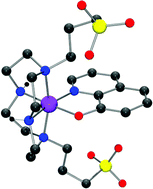 Syntheses of 8-quinolinolatocobalt(III) complexes containing cyclen based auxiliary ligands as models for hypoxia-activated prodrugs
Syntheses of 8-quinolinolatocobalt(III) complexes containing cyclen based auxiliary ligands as models for hypoxia-activated prodrugs 










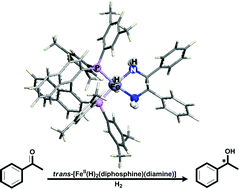 trans-FeII(H)2(diphosphine)(diamine) complexes as alternative catalysts for the asymmetric hydrogenation of ketones? A DFT study
trans-FeII(H)2(diphosphine)(diamine) complexes as alternative catalysts for the asymmetric hydrogenation of ketones? A DFT study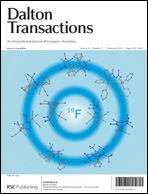

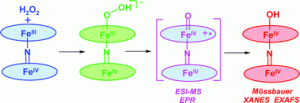 High-valent diiron species generated from N-bridged diiron phthalocyanine and H2O2
High-valent diiron species generated from N-bridged diiron phthalocyanine and H2O2 Frontiers of synthetic solid state chemistry – Issue 26, 2010
Frontiers of synthetic solid state chemistry – Issue 26, 2010

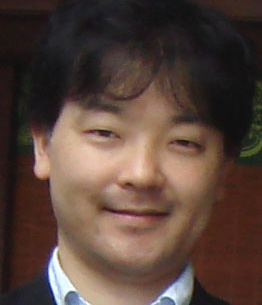

![Diagram showing the [Bi3GaS5]2+ cation and the trimeric star-shaped [Ga3Cl10]− anion](https://blogs.rsc.org/dt/files/2010/11/c0dt00985g-ga1-300x135.gif)